-
Posts
2,859 -
Joined
-
Last visited
-
Days Won
19
Content Type
Profiles
Forums
Blogs
Gallery
Events
Store
Posts posted by Claudio
-
-
Just now, Nicolas7507 said:
Beautiful Claudio !

The top one is remarkable.

Regards,
Nicolas
Jetzt weiß ich, wo die Vollrath Spange untergekommen ist

Meinst Du etwa diese??? I didn't know the name of the recipient, but I missed to buy the medal bar on Ebay several years ago... just got the "feldspange"... do you know the history behind this bar and his original owner???

 0
0 -
-
very well presented Chris!



 0
0 -
Hi Chris!
Now you HAVE to visit the Kolovrat where Schörner for his actions earned the PlM near Kobarit (Caporetto in Italian, Karfreit in German), where the German (Alpenkorps) and Austrian troops lauched their offensive on a foggy and rainy October 23rd 1917. Soon it will be 100 years anniversary, sure enough, as I spoke with the Museum director in Kobarit a couple of years back, (beautiful Museum, they organize excursions to the various front https://www.kobariski-muzej.si/gefuhrte_touren/fuhrungen_zu_ehemaligen_frontabschnitten/ , I have been there twice!), they will have something organized this year. Every year, he told me, on that very date they organize a trekking trip to the Matajur and repeat the route taken by Rommel to get to the summit and completly take by surprise and surround all the Italian troops in this part of the front (Rommel alone with its Wurttembergian mountain "Kampfgruppe" of 2-3 reinforced companies took 9'000 prisoners). The first being awarded was Schörner; in fact that award was intented for the first officer who could take the Kolovrat heights. The Central power's generality thought this might have been the furthest break-through point to achieve during that offensive. But Rommel went on, took the oppurtunity to fully use the favorable momentum, also driven by the fact that he badly wanted to win the PlM, too. Finally, thanks also to Major Sproesser's insistance and recommendations (commanding officer of the whole Wurttembergian mountain troops/battalion and direct superior of Rommel then Oberleutnant, same rank of Schörner too), Rommel got his so ardently desired PlM (as well as Major Sproesser did receive it... see picture!).
I would love to visit these places again... the history there is so great! Food and locations also! Slovenians are very friendly and most can speak Italian and English well. So interesting; you can still find a lot of trenches and paths to walk... all very well described. The view from the Matajur over the valley of the Isonzo/Soca river (North) and on the plains towards Udine and Triest (South) is just breathtaking and it shows so well how important was to take this Mount for the Central powers... after that point there were no natural obstacles until Venezia, apart from the rivers (like Piave where the offensive was eventually stopped). If they had taken the bridges or the western banks of the river Piave, the Central powers troops would have taken Venezia and the Po plains ...
Very interesting stuff... ;-)
Ciao,C
0 -
-
Hi Chris!
You are totally right to say it's a piece of history; it all boils down to how much are you prepared to pay for it. I think that you did well buying the ring; I'm sure that Schörner wore much more his "Leiberring" and it was quite special to him. Maybe he was wearing it during the assault at Caporetto in October 1917, who knows it? ... for sure not the medal bar...
... for sure not the medal bar...
Eur 1'500.- was the value of the medals if they were worn by a Oberstleutnant Schmidt, Müller or even Arschloch... I was ready to pay up to 3 times the price, but no more than that. For that Price however, I'd have liked to have seen the reverse of the bar, just to be on the safe side. It's also possible that he had 2 bars... some officers owned many bars, like a civilian attire "Frackspange" and also a normal "Ordensspange" to be worn with the uniform. I heard of a Colonel/Oberst who had 6 (!) EK1 1914!
I remember that Th. had for sale also the medal bar of General Deitrich Von Saucken, 27th recipient RK with oak leaves, swords & diamonds, starting price Eur 5'000.- and he didn't sell it (see Pictures below). Also in this case there weren't any pictures of the back of the bar neither Information about the provenence (who owned it before, from where it came... etc.). Moreover the combination's of von Saucken's medal bar was somewhat less unique and interesting.
Again, Chris, well done with that ring... it fits perfectly in your collection and, if I can say so, to your Leiber "addiction"... I'm also quite interested in that Regiment, the Alpenkorps and especially the "Gebirgsjäger"... being a Swiss!


C
0 -
Cute ribbon bars!

 All Godets... the one with the blue backing and more robust needle catch Setup is earlier, maybe even late WWI.
All Godets... the one with the blue backing and more robust needle catch Setup is earlier, maybe even late WWI.
Thanks for showing...
 0
0 -
During war German soldiers weren't allowed to wear the full bar, it was prohibited (that's why so many bars weren't updated with the EK 1939 clasp or the WiO for example), just feldspangen was allowed. Although I have seen lots of Pictures with soldiers during WWII wearing medal bars, especially at weddings or unofficial/private Events.
Here some other stuff of Schörner that finally weren't offered on the auction.
Enjoy! ;-)Claudio
0 -
17 minutes ago, HeikoGrusdat said:
right.....you have better things for less money

Think so too, dear Heiko!

 0
0 -
On 17/7/2017 at 19:31, Chris Boonzaier said:
Hi, somewhere in the catalog it mentions that the consignor who had it bought the group from the son.
Yup, I would have gotten the ring and Schörner's copy of the regt history for about EUR700 less than I paid for it on the auction, including fees. All because of my bloody spam folder.....
From that lot I was mostly intereted in the Bavarian Award certificate and his 1920s drivers license ... but I don't think we can pinpoint when the bar was made...
Surely after the Anschluss of the Ostmark (Austria)... he moved that Austrian WWI MVK3 before the FEK (Hindy cross)... that cross was considered German after Austria annexed in March 1938...
0 -
7900 euros for a medal bar probably mounted after the war... mmmmhhh... not good enough for me...
 0
0 -
Interesting... if you could find a deal to buy stuff from him directly you would have spent much less money... and he could probably got more out of it!
Btw on the catalogue it was mentioned that this stuff came directly from the family (Familienbesitz)... so that was not entirely true... or was it???
0 -
http://www.lexikon-der-wehrmacht.de/Personenregister/S/SchoernerF-R.htm
this is one which he's wearing is not exactly the same (look at the order of the medals)
@ Chris: I noticed that... But it didn't show it as well as the back of the bar. For that price I would have put more pictures in the catalogue...
0 -
That's the reason I finally didn't want to win that auction...
 the medals on the bar were about 1500 euro worth... and no picture of the very same bar being worn...
0
the medals on the bar were about 1500 euro worth... and no picture of the very same bar being worn...
0 -
I think € 6'400 plus 23%, almost € 7'900 including fees...
 0
0 -
Check Thies' catalogue here:
http://www.andreas-thies.de/kataloge/62_auktion.html
Schörner's articles are from page 290 onwards
For example his medal bars and some (many) documents were sold. His Godet Pour le Mérite wasn't on sale.
Best regards,
C
0 -
Congrats Chris!!!!



I tried to bid on Schörners bar, without luck... too expensive!
But when I saw that Leiberring, I immediately thought of you...
well done!
C
0 -
IMHO the EK2 is original, very likely like Dansson said, a Deumer piece, produced in the late 20ies/early 30ies. These sometimes you can find in pretty pristine conditions. I got a group of a officer and WWI veteran that had 2 EK1 1914... one was heavily worn on the field and the other one it was mint like the one you have on this bar. I don't like the BMVK1X either... these are easily upgraded by skilled collectors/dealers who have professional skills in gilding process and also in enamel repairs (I know a Bavarian collector/dealer who did it...). I would stick with textbook BMVK1, early types, 3 pieces medallion with gold L cyphers. Not all the Bavarian BMVK producers, produced the 1st class cross for instance...
0 -
-
Hi Laurentius,
Thanks for showing your medal bar and welcome to this very informative and interesting forum.
First of all it's quite impossible to say if this bar was really put together by a Godet bar: for sure the color of the backing (Godet used red before 1914, but a bit brighter tone of red and there always was a label with his name on such bars), the needle-catch system on the back, the fact that the EK2 1914 is not a Godet piece, are all indicators that probably this is not a Godet's bar. Furthermore the fabric on the back seems to me to be restored in a later period, but to be sure you need to put it on UV-light and check if the thread used is not post WWII.Your bar is nevertheless a nice one... enjoy it! ;-)
ciao,
Claudio
Majors d. R. im Pio-Bat 17 Adolf Bliesener
(* Duisburg 27.08.1868)
Dear forumites,
My latest new entry...

Godet 100% also the Feldschnalle....
Orden & Ehrenzeichen auf der Schnalle:
- Preußen, Eisernes Kreuz 2. Klasse 1914 am Kämpferband (OEK 1909), E gs/S emailliert;
-
Preußen, Kgl. Hausorden von Hohenzollern, RK m. Schwertern (OEK 1789), Sv;
-
Hamburg, Hanseatenkreuz (OEK 688), E vs Ku;
-
Deutsches Reich 1933-45, Ehrenkreuz für Frontkämpfer (OEK 3803/1);
- Preußen, Kronen-Orden 4. Klasse (OEK 1762), Br vg teils E;
- Preußen, Landwehr-Dienstauszeichnung 1. Klasse f. 20 Dienstjahre, nur für Offiziere (OEK 1977), S/G;
- Österreich Kaiserreich, Militärverdienstkreuz 3. Kl. am Tapferkeitsband
Laufbahn:
-
Am 27.08.1868 in Duisburg geboren.
-
20.09.1890: Sec.Lt. in der 2./Pi.Btl.17 Stettin
-
RL 99: Leutnant d.R. Bliesener beim Pi.Btl.17 (gemeldet beim Bez.Kdo. IV Berlin)
-
15.06.1899: Oberleutnant d.R. Bliesener beim Pi.Btl.17 (gemeldet beim Bez.Kdo. IV Berlin)
-
RL 04: Oberleutnant d.R. Bliesener beim 1.westpreußischen Pi.Btl.17 (gemeldet beim Bez.Kdo. IV Berlin), Ldw.DA 2.Kl.
-
17.11.1906, RL 14: Hauptmann d.R. Bliesener beim 1.westpreußischen Pi.Btl.17 (gemeldet beim Bez.Kdo. I Cassel), Kronenorden 4.Kl., Ldw.-DA 1.Kl.
-
18.06.1915: Major d.R. Adolf Bliesener war Kdr. des (Gas) Pionier-Btls. 36.
Nach dem Krieg war er Branddirektor in Kassel.
0 -
Nice Schwarzburg bar... really very easy to restore: I would put a Landwehr DA 2. Klasse or 1. Klasse and a Zentenarmedaille... if you put a Landwehr 2nd class you would have to invest about 20-30 USD + EK2 (30-40), with a 1st class maybe 100-150 USD more... either way really doable...
0 -
Hi Jock!
Nice stuff... especially the small medal bar... a pre-WWI. Can you show a better pic of the 62nd Artillery badge (front and reverse)? What do you collect?
ciao,
C
0 -
Dear Forumites,
Some nice additional info on the officer, given to me by a still living descendant who lives in Germany:
145. Ravan Kurt L.W.S. (1897-1968)
2.3.: 1., Ferdinand-Zweig; 1. Ravan-Unterzweig: XXI. Generation
145. (141.a) Ravan Kurt Leopold Max Sigmund, geb. in Karlsruhe am 23.03.1897, gest. in Freiburg i.Br. am 26.01.1968 (begr. Edb.[ii]), Mitbesitzer zu Sulzfeld, Major, Industrie-Kaufmann
verheiratet in Egglingen (Baden), am 20.09.1920 mit Irmgard v. Lewinski, geb. in Pendenried b. Starnberg am 19.07.1900, gest. in Freiburg am 01.12.1970, begr. Ebd., T. d. Kgl. preuß. Majors d. Res. a.D. Kurt v. L. (1897-1942) und d. Johanna (Jenny) Freiin v. Aufseß (1876-1961).Al. 145. v. Lewinski
Kinder:
-
Friedrich, geb. in Ettlingen am 06.10.1921, Industriekaufm.; verheiratet mit Annemarie Wilke 2 Töchter, 1 Sohn. Fam. Nr. 146
Irmela Emmy Jenny, geb. in Freiburg 21.03.1923, gest. in Schwetzingen 07.02.1987, beigesetzt Sulzfeld[iii], lebte 1950-1965 bei den Eltern in Freiburg, war dann Stiftsdame des Kreichgauer Adeligen Damenstiftes. Von ihr stammt die Idee der Burgschenke.
Berthold, geb. in Essen 24.11.19126, Großhandelskaufm., verheiratet mit Ingeborg v.Ondarza, 2 Söhne Fam. Nr. 147
Adelheit Lisbeth Irmgard, geb. in Essen 16.08.1928, verheiratet in Freiburg i.Br. am 29.12.1953 mit Heinz v. Sigriz, geb. in München 10.01.1928, gest. in Miesbach (OBay.) am 25.07.1996, Ing.
Kinder: Nikolaus v. S., *Bad Tölz 14.12.1954
Wolfgang v. S., * Neuß 24.02.1956
Angelika v. S., * Neuß 22.08.1957
Ravan K.L.M.S. war der Sohn des Kgl. Preuss. Hauptmanns und Ghzgl. Bad. Hofmarschalls Sigmund II. A.F. Frhr. G.v.R. (1870-1951, Fam. Nr. 141) und d. Emily v. Bohlen und Halbach (1874-1939).
1914 wurde er Fahnenjunker im 1. Bad. Leib.Gren.Regt. 109;
1915 Leutnant;
1920 Abschied als Oberleutnant (GLA 456/3682), 1937 reaktiviert;
1920-1930 nach chem.-techn. Studium an d. TH. Karlsruhe: Besuch von Handelskursen und d.
Obstbauschule Geisenheim. Als Betriebsleiter, später Prokurist, in versch. Betrieben
der Holzindustrie tätig. 1926-28 Wohnung in Essen;
1930-1939 in d. chem. Industrie in Bochum, zuletzt Prokurist. Wohnung in Essen;
1939 Zug- u. Komp.Führer im II. Ers.Batl. Gren.Regt. 39, Mülheim, Ruhr;
1939-1940 Komp.Führer 9./Gren.Regt. 257; Hauptmann d.Res. (01.05.1940);
1940-1941 im Stab d. 83. Inf.Div. (Ordon.Offz. O3 und 1c), dann d. 99.leicht.Inf.Div. (IIa);
1941-1942 im Stab 7. Geb.Div. (IIa), dann Gen.Kommando LIX. AK (IIb); Major d.Res.
1942-1944 im Stab des LIX. AK als Adjudant, Führerreserve OKH/ D.r.W. Kdo. IV.
1944-1945 Wehrmachts-Streifen-Lehr-Abt.: englische Kriegsgefangenschaft;
1945-1946 Angestellter in der Industrie (Fa. Kohlenwertstoff AG, in Bochum);
1947-1948 Mitarbeiter im Göler’schen Weinbaubetrieb zu Sulzfeld (Wohnung in Amalienhof),
Bevollmächtigter s. Vaters Sigmund, in den Mit-Eingtümer-versammlungen und
Vertragsverhandlungen z. Bildung der „Vierer-Gruppe“ (Vertrag v. 07.11.1947)
1949-1962 in Verkauf u. Beratung d. Rhrstickstoff AG, Bochum, für Baden-Württ.
Wohnte seit dem Tod des Vaters (1951) in dessen Haus in Freiburg (Seminarstrasse 16, verkauft Herbst 1970) und war 1951-1968, gemeinsam mit Albrecht G.v.R. (1878-1966), verantwortlich für das Frhr. V. Göler’sche Rentamt in Sulzfeld.
Orden: EK 1914 II. Klasse (1915)
Ghzgtm. Baden, Zähringer Löwen, RK 2. Kl. m. X (1916 durch d. Grossherzog)
EK 1914 I. Klasse (1917, durch den Deutschen Kronprinzen!).
Numerische Reihung: Ravan K.L. (hier Nr. 145) müsste als Nr. 142 direkt seinem Vater Sigmund (141) folgen, und Egon (hier Nr. 142) als Nr. 157, erst nach Berchtold (hier Nr. 147) und dessen Söhnen. Die Reihung hier folgt der Übersichts-Stammtafel des Göler-Sonderdruckers von 1979.
[ii] Sein und seiner Eltern gemeinsamer Grabstein kam am 14.11.1985von Freiburg auf den Sulzfelder Familien-Friedhof neben der Ev. Kirche.
[iii] Irmela: Urnen-Beisetzung im neuen Familiengrab auf dem Neuen Sulzfelder Gemeindefriedhof.
0 -
-





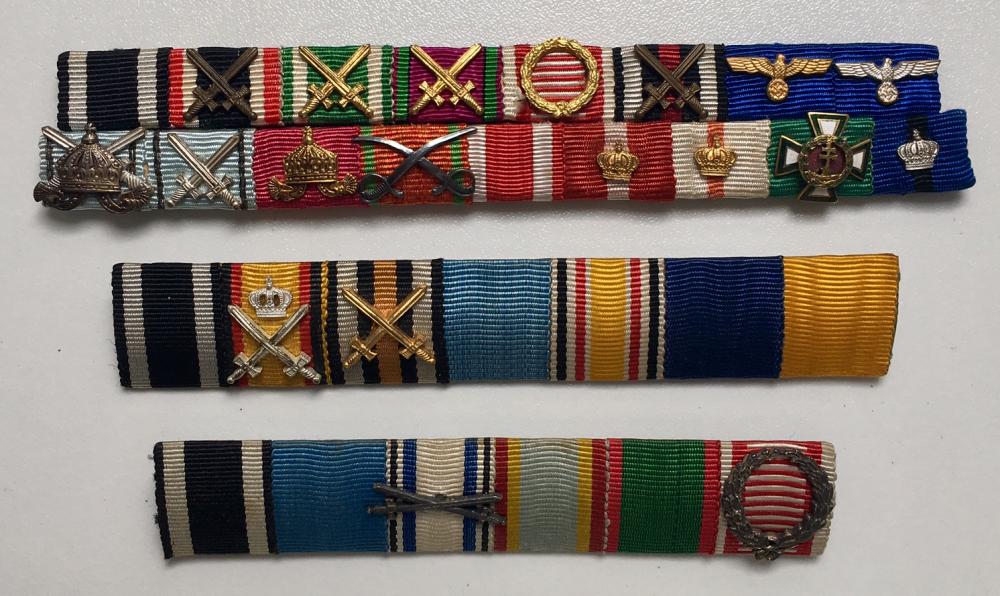
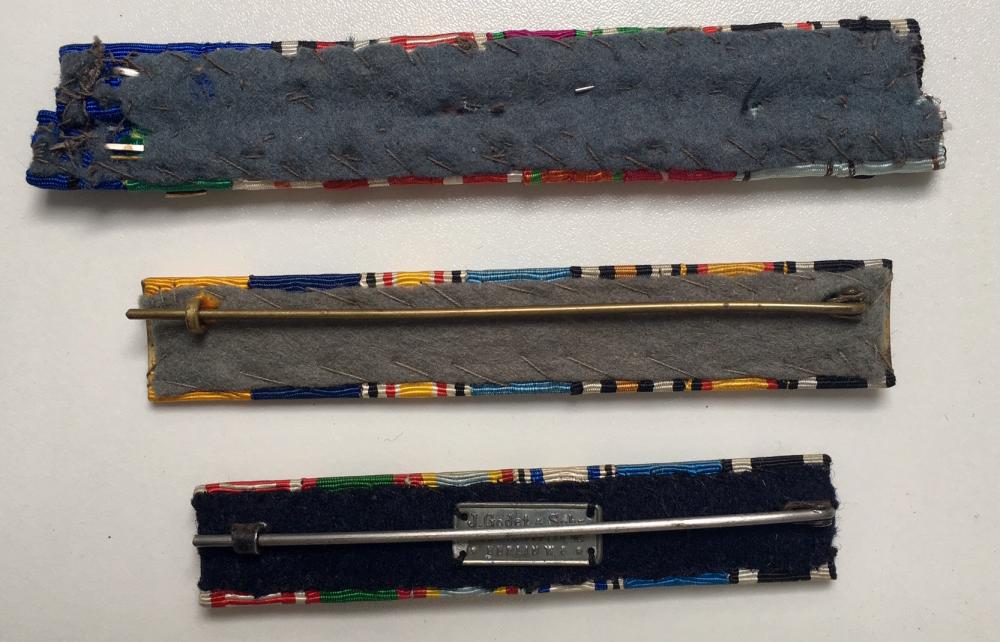
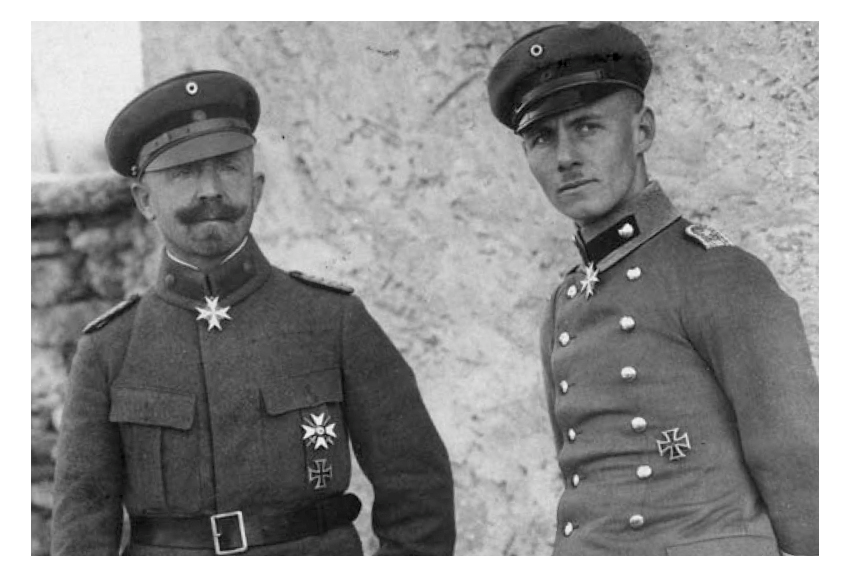


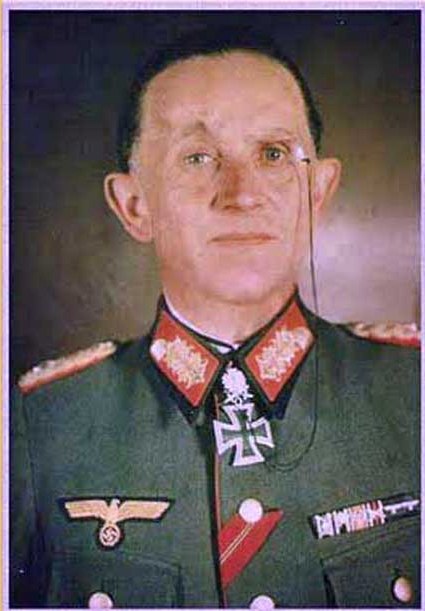
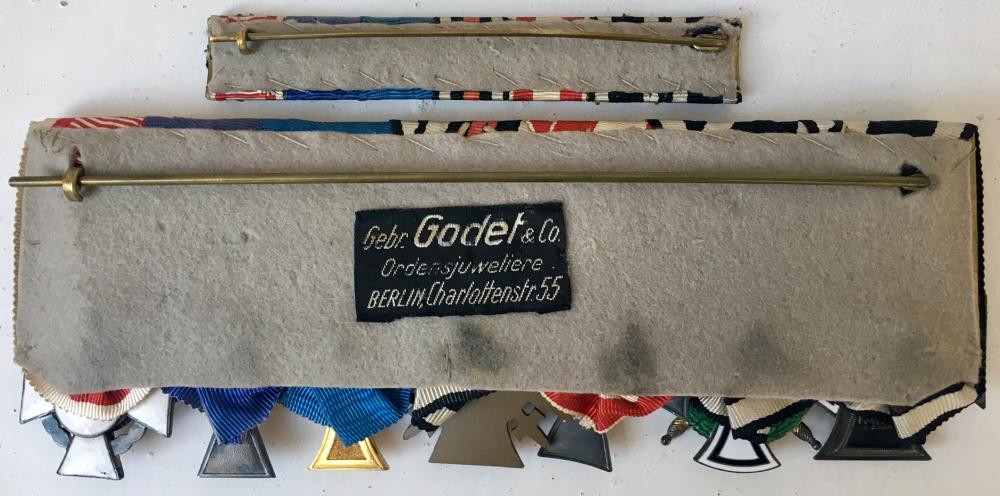

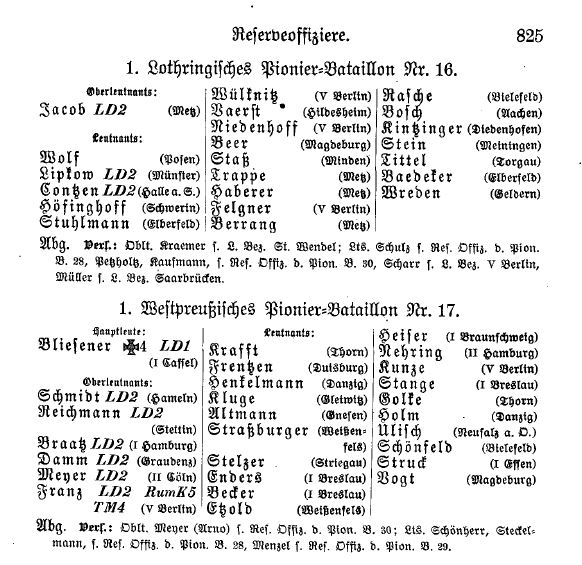

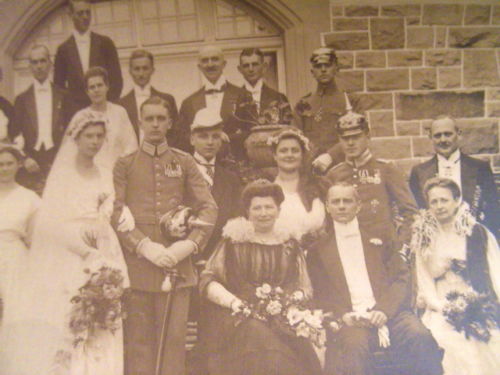
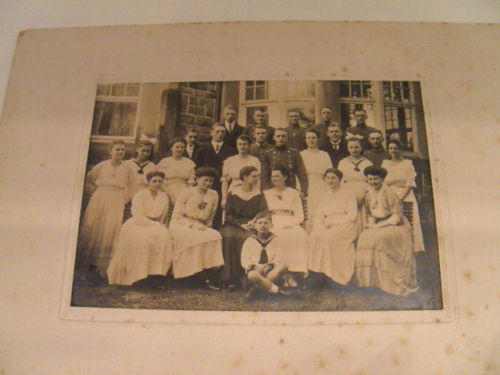
Show your immaculate Godet Spangen!
in Germany: Imperial: The Orders, Decorations and Medals of The Imperial German States
Posted
Ja, sorry... ich habe den Namen des Trägers momentan vergessen, jedoch aufgeschrieben (katalogisiert)...
here some more details about it http://gmic.co.uk/topic/28893-ribbon-bar-questions-again-and-again/?tab=comments#comment-273033